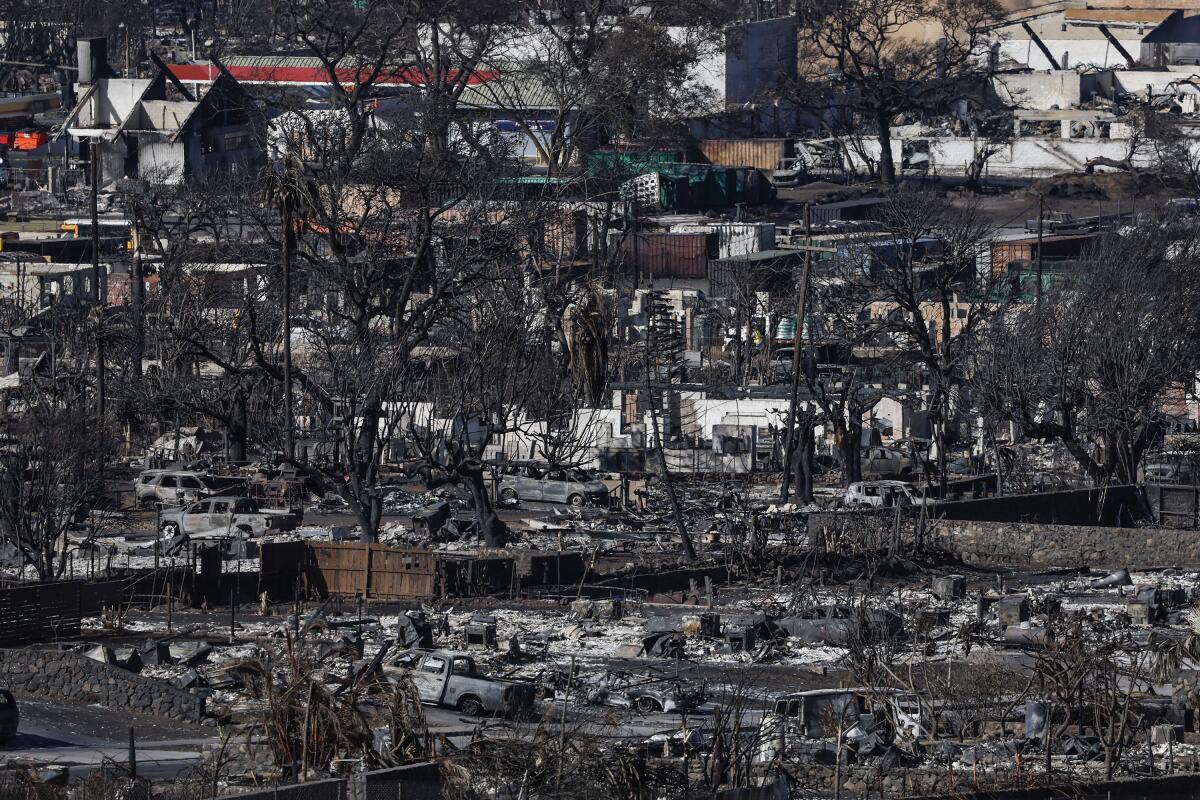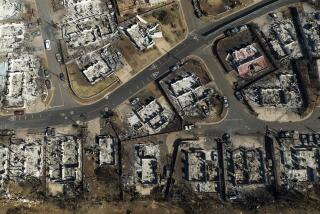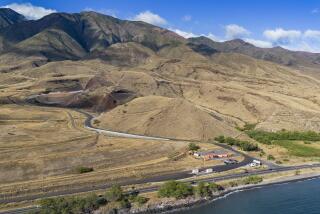Opinion: How to rebuild Lahaina’s economy after the wildfire — without relying solely on tourists

Even as rescue and recovery efforts proceed in Maui after the deadliest wildfire in modern U.S. history, it’s not too soon to start thinking about how to rebuild the lives and properties in the devastated town of Lahaina.
Officials say that more than 80% of the structures in Lahaina, once the capital of Hawaii’s royal court, were destroyed when the inferno swept through the community. Some of the buildings reduced to ashes or damaged reached back to Hawaii’s whaling days and later to a shipping industry fueled by the islands’ sugar industry.
As investigations continue into the cause of the fire and as the community mourns, Maui County and the survivors will face a huge challenge in the coming months and years: rebuilding their town and creating a new economic future, one less dependent on the kind of tourism that has been an economic engine for the island for decades.
In the past, tourists came, in part, to see the charming historic, wooden buildings that defined old Hawaii. That can never be restored. But future visitors might be attracted by a rebuilt Lahaina that showcases the latest advances in energy efficiency, blended and balanced mixes of commercial, residential, hotel, restaurant, shopping, pedestrian walkways and car-free zones.
Naturally, there will be pressure to rebuild as quickly as possible. And economic instincts will drive residents and officials to slap up new structures that perhaps mirror the old ones. But that will only result in re-creating a place that is a lesser shadow of its former self.
With federal and state aid that has already been pledged, insurance payments and collective thought and planning, the leaders of Lahaina can create a new vision for the town that takes into account a future altered by climate change, which was a factor in the drier conditions this year that fed the wildfires.
For instance, all new construction might be required to incorporate solar panels in this sun-blessed state. Town and county officials should consult urban planners who can offer cost-saving and design ideas that could create a vibrant city center, protected by a new fire-stopping ring to prevent another wildfire catastrophe. Because the fire wiped out the town’s vegetation as well as buildings, new plantings should largely use native Hawaiian plants and species.
Officials could create new entertainment venues highlighting Hawaii’s rich musical history and deep pool of talent. Open-air food markets and shops that don’t rely on access by cars would allow visitors and residents to share the rich offering of local foods. New attractions might provide centers that feature Hawaiian seafaring and agricultural techniques, or others that educate visitors about the importance of oceans in Hawaiian history and the effects of global climate fluctuations.
Rebuilding housing for local workers will have to be a central mission since lack of housing has been a significant problem for Maui even before the fires. Other advancements in the infrastructure should also be explored, including vertical farming concepts, new methods of water preservation, and emergency communications networks that could operate throughout any future disruptions. (Rescue efforts in Lahaina were severely constrained because internet and cellphone service was disrupted).
A town that creates opportunities for local residents in non-tourist sectors can survive shocks, as during the COVID-19 pandemic, which demonstrated how overly dependent the community was on one industry.
Lahaina officials also have a chance to address historic wrongs by listening to the voices of native Hawaiians, whose interests are often trampled by the more powerful interests of landowners and the hotel and tourism industry. Current property ownership and legitimate land deeds have legal standing and must be respected. But community spaces can incorporate more culturally diverse uses and opportunities for local residents than they have in the past.
All of Lahaina is now sacred ground, and a new version of the town should include respectful sites and tributes to the original Hawaiian people and the victims of this calamity.
Rebuilding Lahaina in ways that put Hawaiian values of ohana and aloha front and center could lay the groundwork for visitors who seek the beauty of the islands but also want to learn about Hawaii’s long history and witness the resiliency of a town that built back better and smarter.
Ken Wills is a writer based in Kapa’au on the island of Hawaii.
More to Read
A cure for the common opinion
Get thought-provoking perspectives with our weekly newsletter.
You may occasionally receive promotional content from the Los Angeles Times.










